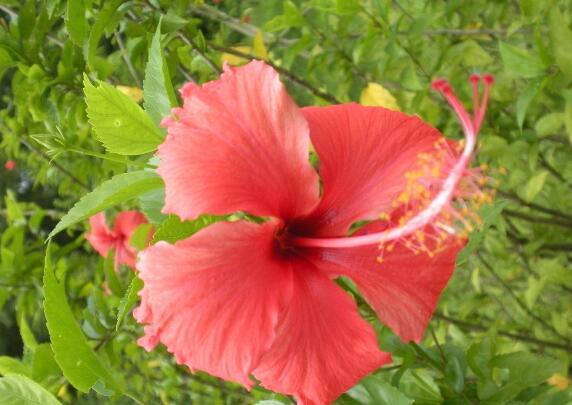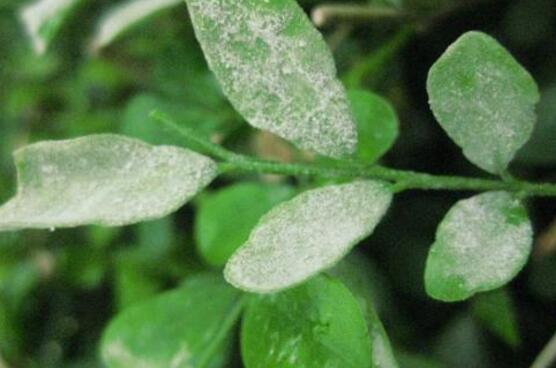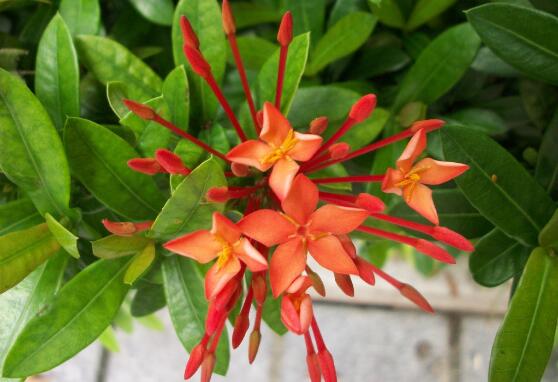What if the mulberry flowers grow worms? the disease and pest control of mulberry flowers / anthracnose should be sprayed.
Fusang flower, a very strong ornamental plant, has a long flowering period, its fiery red flowers are particularly charming, and are deeply loved by flower friends. However, when potted mulberry flowers are planted at home, there are often some bugs, which are distressing to many flower friends. What about the worms that grow in mulberry flowers? Next, the editor will introduce to you several common diseases and insect pests of Fusang flowers. If you love flowers, you must have a look.
First, help mulberry flower to grow worm, spray with medicine

As a good product of indoor breeding, many people raise mulberry flowers at home, but if we do not raise mulberry flowers according to the breeding method, it will grow insects and get sick, flower friends must be very worried! As for what to do when the mulberry flower grows, it is actually very simple. We first determine which kind of bug it is, and then aim at solving the problem. For the prevention and control of diseases and insect pests in Fusang flowers, the editor talks about insect pests and diseases respectively.
(1) Diseases and insect pests of Fusang flower, 3 insect pests
Red spiders, scale insects, whitefly
1. Red spider
Harmful site: one of the main insect pests of Fusang flower, which mainly harms the back of leaves and survives by sucking the leaf juice of Fusang flower.
Symptoms of damage: the plant will become malnourished, and the leaves of the mulberry flowers may turn yellow or even detach.
Control method: after the bug is found, rinse the whole plant with large water, and then spray special insecticides, such as 2000 times of dicofol EC, spray several times more.
2. Scale insects
Damage site: another kind of Fusang flower insect pest, it generally appears in May-June, mainly harms the stem, petiole and so on.
Symptoms of infringement: the leaves will yellowing, withering, or even falling, seriously affecting the indoor ornamental effect of Fusang flowers.
Prevention and control methods: when there are few shell insects, you can wipe them clean with a toothbrush or a dishcloth; when there are many diseases and insects, you can use 50% marathon and 40% dimethoate 0.1% solution to kill them in turn.
3. Whitefly
Harmful site: the insect also endangers the health of Fusang flowers. It parasites on the back of the leaves of the plant and survives by piercing the mesophyll and sucking juice.
Symptoms: the leaves of Fusang flowers will curl, turn green and yellowing, and even dry and fall off.
Prevention and control methods: when the pest is found, it should be sprayed in time. 1500-2000 times of chlorpromazine wettable powder can be sprayed. After 15 days, the plant will basically return to health.
(2) Diseases and insect pests of Fusang flower, 4 diseases
Anthracnose, leaf spot, stem rot, coal fouling
1. Anthrax
Damage site: the most common disease of Fusang flower, which mainly harms the leaves of the plant.
Symptoms: there are nearly round or irregular round spots on the edge of the leaf. With the severity of the disease, the color of the spot will become dark brown and spread around. At this time, the center of the lesion is grayish white and the edge is crimson, which is easy to identify.
Prevention and control methods: when diseased leaves are found, they are removed; in the process of disease, we should remove withered branches in time and burn them centrally, so as to reduce the source of the disease. In addition, you can spray Bordeaux liquid for prevention and control, about 10 days spraying once, spraying 3-4 times basically good.
2. Leaf spot
Damage site: leaf spot is a fungal disease, which mostly occurs in the cold weather period at the end of autumn. it is one of the main diseases of Fusang flowers, and the damage site is also leaves.
Symptoms: the leaves appear light yellow and reddish yellow spots, and then expand into a round or oval shape; if the environment is relatively humid, black granular substances may appear on the disease spots, and the leaves will dry up and fall off in the later stage.
Prevention and treatment: after the disease is found, we should remove the residual water in the diseased leaves in time to avoid too much water. In severe cases, 1000-1500 times of demulsified oil is used for prevention and treatment, and 25% is sprayed 2-3 times every 7-15 days, and it can be effective after several times.
3. Stem rot
The disease is also one of the diseases of Fusang flower, it mostly occurs in the rainy season, the disease is serious under the condition of high temperature and heavy rain. Symptoms: the cortex of the affected site will shrink and show dark brown, but the subcutaneous skin has actually begun to rot; when the disease is serious, the plant may dry up and die
Prevention and control methods: the key to the prevention and control of the disease is to prevent long-term erosion of plants by torrential rain; if the disease is serious, we can spray and control it with 200-500 times of Tubujin every 10 days before and after the rainy season.
4. Coal pollution disease
Damage site: another disease of mulberry flowers, which harms branches and leaves.
Symptoms of the disease: dark brown stains appeared in the branches and leaves, and then gradually expanded, forming a large area of black soot-like bacteria layer, affecting the photosynthesis of the plant, resulting in the normal growth of mulberry flowers.
Prevention and treatment: when diseased branches and leaves are found, you can wash or burn them with 1000 times carbendazim solution. In addition, in peacetime, we should strengthen indoor ventilation to reduce the humidity of the greenhouse air, so as not to spread the disease.
With regard to the prevention and control of diseases and insect pests in Fusang flower, the editor has introduced it here. I believe that if we encounter it again in the future, we should know how to do it! Generally speaking, in the growth process of Fusang flower, diseases and insect pests are inevitable, so for unnecessary trouble, flower friends should keep in mind the above diseases and prevention methods.
What if winter corals grow worms? pest control of winter corals / aphids and anthracnose
Winter coral, a kind of indoor potted plant with excellent ornamental quality, is very adaptable and easy to raise at home, so it is deeply loved by flower friends. But in the process of breeding, because most of the flower friends are novices, it is easy to maintain improperly, and the result is that the plant worms get sick. So, what if the winter coral grows worms? The following are two kinds of winter coral pest control, follow the editor to learn about it.
1. Winter coral worms, spray with medicine
Friends who have seen winter coral should be impressed by the beauty of winter coral, which is why so many people keep it at home. But if the winter coral grows worms, it will seriously affect its ornamental, so once the insects are found, they should be sprayed immediately to control them. In this regard, the first thing to determine is which kind of diseases and insect pests, so next let's take a look at the winter coral pest control.
II. Disease and pest control of winter coral
1. Aphids
Once winter corals grow worms, they are basically aphids. The worm is very small, usually black or green, it propagates rapidly, once entangled by it, it will seriously endanger the health of the plant.
Symptoms: aphids mainly eat the tender leaves of winter coral, absorb nutrients, leading to plant malnutrition, if aphids eat the roots of winter coral, it will also lead to the death of winter coral.
Manual control: when aphids are found in spring, they can be brushed with a brush dipped in water; in winter, residual branches and fallen leaves can be cleaned in time to reduce overwintering eggs; in addition, we can also combine pruning to burn the damaged branches and flowers to reduce the source of the disease. as for how to prune, there is a reference to winter coral pruning.
Drug control: in addition to artificial pest control, aphids can be sprayed with 2000 times of omethoate EC or 1500-2000 times of dichlorvos EC.
2. Anthrax
Cause of illness: anthrax is caused by fungal infection, in June-July, is the rainy season of the year, when the humidity in the air will be very high, the temperature is also relatively high, and this environment is very suitable for bacterial growth! So in the hot summer season, winter corals are prone to anthrax.
Symptoms: the disease is mainly harmful to winter coral leaves. At the initial stage of the disease, round disease spots appear on the diseased leaves, then turn from round reddish brown to grayish white, then turn dark brown and produce black spots arranged in wheels; in severe cases, the leaves wither and die.
Prevention and control methods: once winter coral suffers from anthracnose, we should immediately cut off the infected branches and leaves and destroy them centrally to avoid re-infection; at the same time, spray chemicals to the sick winter corals, such as 700-800 times of carbendazim wettable powder or 500 times of 75% chlorothalonil.
With regard to the pest control of winter coral, the editor has introduced it here. I believe that if you encounter winter coral worms or get sick again, you should know how to do it! Generally speaking, winter corals are not difficult to raise, as long as we follow the cultivation methods of winter corals. After doing so, the bugs will not come to the door, and finally wish everyone's winter coral can grow beautiful ~
What if the orchid grows worms? disease and pest control of orchids / 2 insect pests and 2 diseases
In the process of breeding ball orchids, the last thing people want to encounter must be such problems as diseases and insect pests. This problem not only affects beauty, but also poses a great threat to what the plants are, so what about the ball orchids? How to control the diseases and insect pests of orchids? Next, the editor will take you to learn about it.
1. What if the orchid grows worms?
II. Disease and pest control of orchids
Insect pest
1. Shell worm
The shell insect is a common pest among the diseases and insect pests of the ball orchid. It mainly feeds on the juice in the leaves of the ball orchid, and gradually absorbs it with mouthparts deep into the leaves, which leads to the phenomenon of ball orchid wilting due to lack of nutrients.
Control method: in the control of this pest, we can use 3% pyrethroid 1000 times solution to spray.
two。 Aphids
Aphids are a big pest in many plants, and orchids are no exception. it mainly threatens the seedlings of orchids, which will gradually suck the sap in the seedlings, resulting in the seedlings can not grow and die. It can be seen that the harm of aphids is still great among the diseases and insect pests of bulbous orchids.
Prevention and control methods: the harmful period of aphids is at the turn of spring and summer every year, so we must pay special attention to this period of time. When dealing with this kind of pest, we can use 1000 times of trichlorfon to spray. Generally, three times in a row can completely eliminate this pest.
Disease
1. Anthrax
Among the diseases and insect pests of orchid, anthracnose is a kind of disease with high incidence. At the initial stage of the disease, many black spots will appear on the leaves of orchid, and will spread gradually with the passage of time, and finally lead to the phenomenon of plant death.
Prevention and treatment: in the prevention and control of this disease, we can use 1000 times of methyl topiramate to spray orchids, usually once every 7-10 days, and can be basically cured after 2-3 times.
two。 Soft rot
The high incidence period of soft rot is in the summer every year, so during this time, we must pay special attention to the appearance of many watery spots on the leaves of orchids, which spread very fast. it will eventually lead to the phenomenon of rot and death of the plant.
Prevention and control methods: in the prevention and control of this disease must be timely, if the time is prolonged, it will be difficult to cure, we can use methyl parathion 1000 times spray to control orchids.
- Prev

What should we do when insects grow in Jiuli incense? disease and pest control of Jiuli incense / 3 insects and 3 diseases are sprayed with medicine
Jiuli incense, a very ornamental plant, is very popular with flower friends because of its frequent flowering period and charming scenery when it blossoms. In life, many flower friends keep Jiuli incense, but because of careless maintenance and other reasons, will attract diseases and insect pests, that Jiuli incense leaves worms how to do
- Next

How to breed dragon boat flower, dragon boat flower three propagation methods/cutting survival rate is the highest
Dragon boat flower, an ornamental plant, it not only flowers, but also rich in color, very likable, many flower friends potted at home. However, in addition to viewing, there are many effects and functions of Dragon Boat Flower, which is also multiplied by people. How does Dragon Boat Flower reproduce?
Related
- Fuxing push coffee new agricultural production and marketing class: lack of small-scale processing plants
- Jujube rice field leisure farm deep ploughing Yilan for five years to create a space for organic food and play
- Nongyu Farm-A trial of organic papaya for brave women with advanced technology
- Four points for attention in the prevention and control of diseases and insect pests of edible fungi
- How to add nutrient solution to Edible Fungi
- Is there any good way to control edible fungus mites?
- Open Inoculation Technology of Edible Fungi
- Is there any clever way to use fertilizer for edible fungus in winter?
- What agents are used to kill the pathogens of edible fungi in the mushroom shed?
- Rapid drying of Edible Fungi

